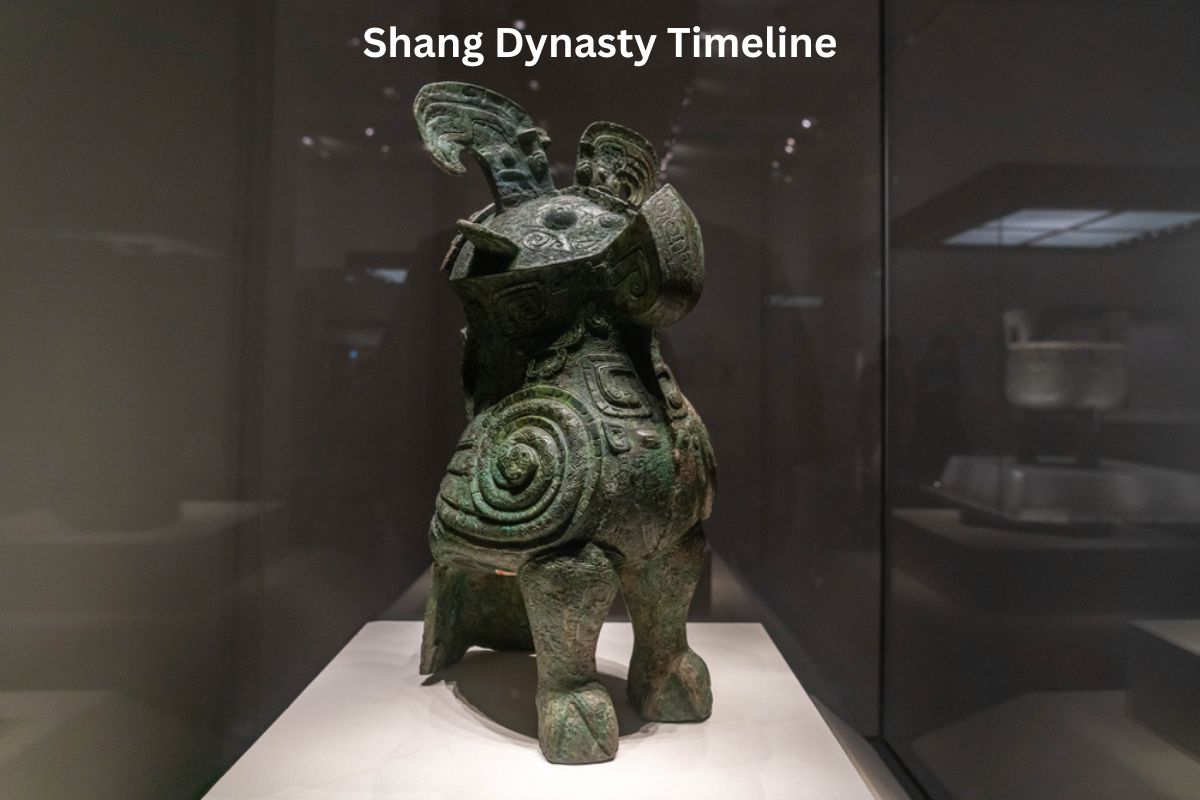The Shang Dynasty, also known as the Yin Dynasty, was one of the earliest and most significant dynasties in Chinese history. Existing from approximately 1600 BCE to 1046 BCE, it is the first dynasty in China confirmed by archaeological evidence.
The period was marked by important cultural, military, and social advancements, including the development of bronze metallurgy, a complex hierarchical society, the use of oracle bones for divination and record keeping, and the establishment of several capital cities, including Anyang.
Its downfall came with the Battle of Muye, leading to the rise of the Zhou Dynasty. Despite its collapse, the Shang Dynasty had an enduring impact on the trajectory of Chinese civilization.
| Period | Events |
|---|---|
| 2070-1600 BCE | Transition from the Xia Dynasty to the Shang Dynasty. |
| 1600 BCE | Start of the Shang Dynasty. Beginnings of advancements in bronze work and writing. |
| Around 1300 BCE | Capital likely moved to Yin, near modern-day Anyang. |
| 1250-1046 BCE | Period of significant cultural, military, and social advancements. |
| 1046 BCE | End of the Shang Dynasty marked by the Battle of Muye and the start of Zhou Dynasty. |
Timeline of the Shang Dynasty
2070-1600 BCE – Transition from the Xia Dynasty to the Shang Dynasty
The Xia Dynasty is considered by traditional accounts as the first Chinese dynasty. Archaeological evidence for it is limited and some debate exists among historians about its extent and even its existence.
Also Read: Facts About the Shang Dynasty
Its transition to the Shang Dynasty isn’t precisely known, but it is believed to have occurred around this time.
1600 BCE – Start of the Shang Dynasty. Beginnings of advancements in bronze work and writing
The Shang Dynasty is the earliest dynasty in China confirmed by archaeological evidence. It was marked by significant advancements in civilization including the use of bronze metallurgy, horse-drawn chariots, and an early form of writing on oracle bones, which laid the foundation for Chinese script.
Around 1300 BCE – Capital likely moved to Yin, near modern-day Anyang
The Shang Dynasty moved its capital several times, with Yin (modern-day Anyang) likely becoming the capital around 1300 BCE.
Also Read: Accomplishments of the Shang Dynasty
Excavations in this area have yielded vast archaeological evidence including buildings, tombs, and inscriptions on oracle bones, providing valuable insights into the Shang civilization.
1250-1046 BCE – Period of significant cultural, military, and social advancements
This period saw further developments in Shang civilization. Their society was highly stratified, with a ruling class, a class of artisans and merchants, and a larger peasant class.
Military technology advanced, with the extensive use of chariots and bronze weapons. In culture, the Shang produced intricate bronze vessels for rituals and developed a complex religion with a pantheon of gods and ancestral worship.
1046 BCE – End of the Shang Dynasty marked by the Battle of Muye and the start of the Zhou Dynasty
The Shang Dynasty ended with the Battle of Muye, where King Wu of Zhou led a rebellion against the Shang. King Zhou of Shang, known for his tyranny, was defeated, marking the beginning of the Zhou Dynasty. Zhou rulers justified their rule with the concept of the “Mandate of Heaven,” saying that the gods had withdrawn their support from the Shang and given it to the Zhou.
